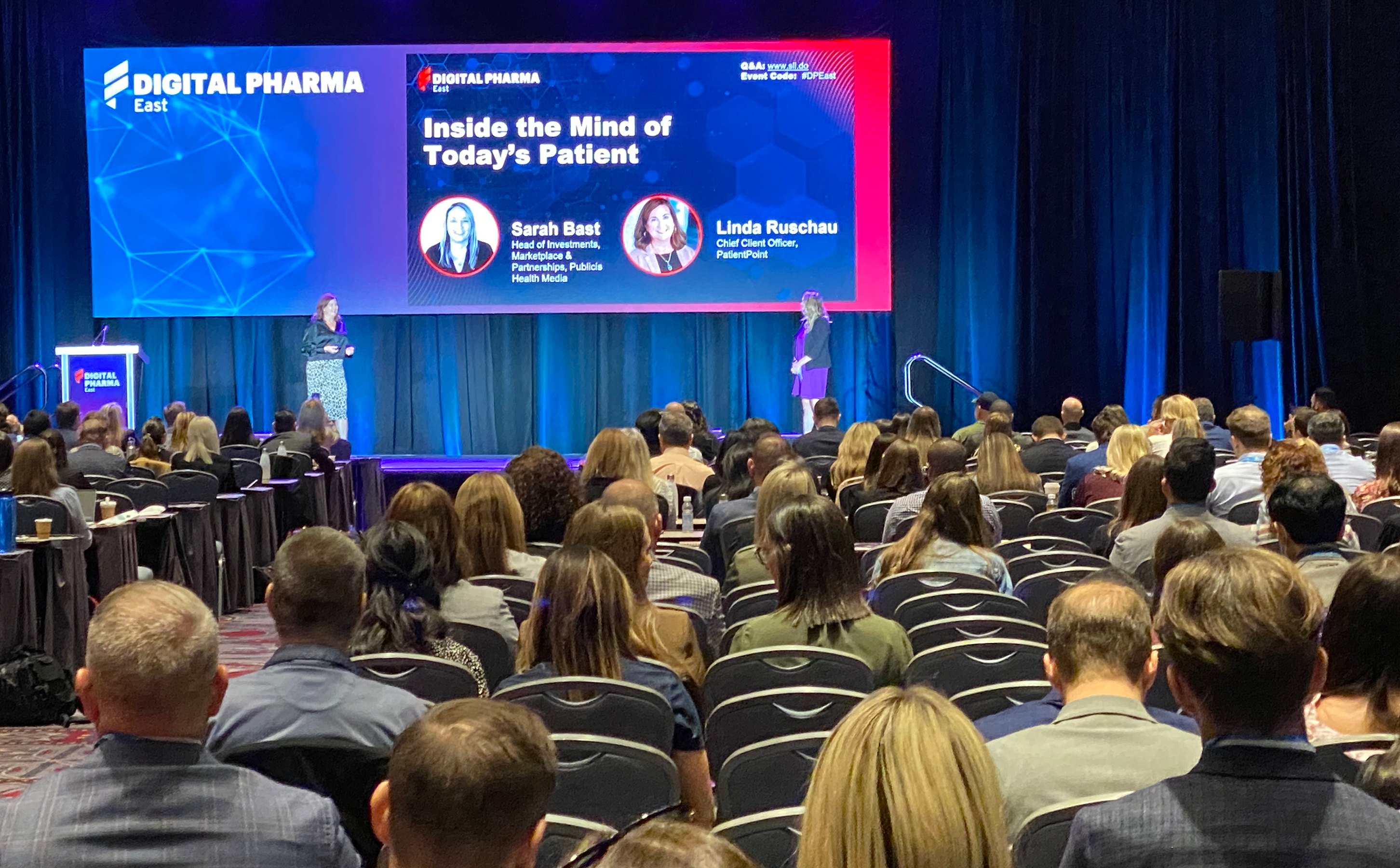Knowing exactly what a patient is thinking, feeling and doing at the doctor’s office is invaluable for pharma marketers. How can we effectively reach them without understanding their feelings?
At Digital Pharma East (DPE), I had the opportunity to unveil PatientPoint’s proprietary research and pull back the curtain on patients’ attitudes and behaviors at the doctor’s office. Alongside me was one of the fiercest and most experienced POC supporters: Sarah Bast, EVP of Investment Marketplace at Publicis Health Media.
Here are key highlights from our presentation:
Understanding Patient Needs
PatientPoint partnered with market research leader OnePoll to survey 2,000+ consumers to better understand their feelings, wants and needs related to the doctor’s office. In our presentation, we zeroed in on the waiting room, that prime opportunity to get in front of patients right before they talk to their doctor.
Of the 97% of patients who spend time in the waiting room1, most found the doctor’s office intimidating and reported feeling anxious, stressed and/or afraid. What, specifically, is causing these emotions?2
- 39% of respondents were worried about what they may find out, and
- 38% felt they did not have enough information to help them prepare for the visit while
- 51% said it took too long to be called back.
Consumers were asked what would make their waiting room experience more comfortable. The resounding answer was education: Nearly half said their anxiety would be eased if they were able to read or watch educational materials about their condition and/or symptoms.2
It’s clear—knowledge is power, and relevant health education is exactly what patients want to feel more empowered during their visit.
(See more results from our survey, including exam room insights, here.)
Turning Patient Anxiety into Patient Action
With engaging educational content, the doctor’s office can be transformed from a place of fear to a place of empowerment. At DPE, I also shared findings from a recent eye-tracking study we conducted in partnership with Tobii Pro Insight that analyzed:
- what types of content engage patients the most in the waiting room and
- how patients are affected while watching the content.
The study revealed that when PatientPoint waiting room digital screens display relevant, engaging content, most patients will pay attention to the screen. Patients were highly receptive to the health content and even asked more questions when they finally met with their doctor, compared to the patients who did not see our content.
Our experiential content (e.g., content that seeks to inspire and uplift) reduced the negative emotions of patients in the waiting room and even evoked positive emotions, such as joy and optimism.
What can pharma do with this information? As Sarah shared that brands need to challenge themselves and their creative AORs on the content they are creating for the Point of Care and be mindful of what patients feel in those moments before they meet with the doctor.
Meaningful Outcomes for All
At the end of the day, when we—brands, healthcare providers and point-of-care companies together—create a better waiting room experience, better outcomes are achieved for all.
That’s the power of Point of Care. It’s not just a media platform, but a channel that is proven to help people live longer, healthier lives. According to a recent PatientPoint analysis of medical claims data, PatientPoint locations featuring breast cancer screening education saw a 45% increase in mammography services (compared to similar locations without PatientPoint solutions). Imagine the differences we can collectively make on health if our content drives more preventative health screenings and people start getting diagnoses and treatments sooner.
Sarah validated the positive outcomes Point of Care can also have on brands. Point of Care continues to serve as a valuable channel for the brands Publicis Health Media works with, enabling them to reach qualified patients and drive lower funnel patient and business outcomes. In addition to reaching patients, Point of Care has also been validated as the best way to drive patient conversion.
As Sarah shared, brands need to reach patients at the Point of Care—a time when they are most receptive and wanting to engage with condition and treatment-specific messaging—which allows for an incredible impact that cannot be replicated.

